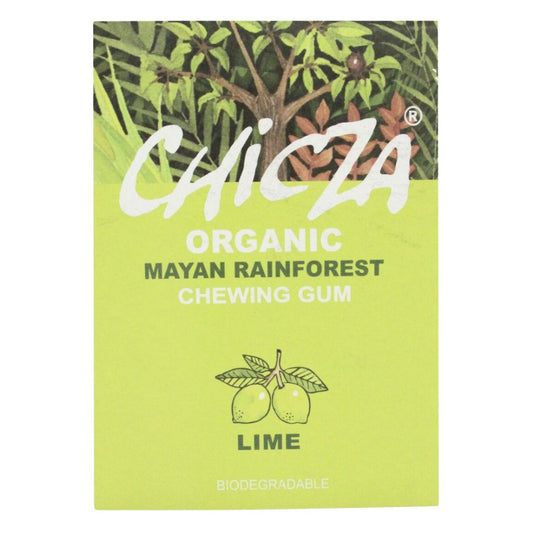
Synthetic gum scam?
Share
Have you noticed that the chewing gum thrown on the ground never seems to disappear? You'll find that same piece of chewing gum stuck in a gap in the wall bricks over and over again as you pass by. A typical chewing gum found in the store contains a synthetic gum pulp that has been flavored with artificial sweeteners, preservatives and colorings. Conventional chewing gums are not recommended to be swallowed, but we don't think that grinding plastic compounds is good for you either, so the chewing gums in our selection use only natural ingredients and genuine chewing gum pulp collected from trees.
Read more below about what regular chewing gums typically contain and you will understand why we do not recommend them. We will also tell you more about the traditional and organic Chicza chewing gum, which according to our values are biodegradable, 100% organic and collected in an ecologically sustainable way, respecting age-old traditions.
Chicza - Genuine biodegradable organic chewing gum
According to the ancient tradition of the Mayan Indians, natural chewing gum pulp, Chicle, is obtained from the rainforest, which is the basis of 100% Chicza chewing gum. Chicle is the sap/sweet liquid of the Sapotilla tree, which is collected with sustainable principles from the rainforests of Central America. The sap collection is similar to domestic birch sap collection, and it does not harm the rainforest tree population. The production of chicle is strictly controlled work according to the standards of the FSC certificate. Best of all, Chicza chewing gum is completely biodegradable. When you throw it away, its all-natural ingredients turn to dust within weeks.
- 100% Organic
- Vegan
- Biodegradable
- Gluten free
- Without additives or synthetic compounds
- Sweetened with Agave syrup
- Fairtrade product
- Kosher certified
- Winner of the Intervational V-Label Awards 2021 of the International Vegan Society

Chicza is a very clear demonstration that it is possible to do things in harmony- not only in Harmony with nature, but also between humans.
- Pablo Muñozledo
Chewing gum's dark secret
The base mass of regular chewing gum contains a lot of questionable ingredients, which are not necessarily mentioned on the product packaging. It is only rarely natural rubber, as most of the time the base mass comprises a number of synthetic rubbers that are made from petroleum. From the same material that plastic is made from. Some of these synthetic rubbers are practically the same stuff that is used, for example, in car inner rubbers.
However, this is not the only problem with chewing gum. Another unpleasant characteristic of conventional chewing gums lies in their endocrine-disrupting compounds. The chewing gum may contain additives E320 and E321 (BHA and BHT) used as antioxidants. The Food Agency's recommendation for the maximum amounts of these intakes is quite small and there is no reason; even in very small amounts, these compounds can, according to some studies, cause developmental and reproductive disorders as well as problems with the functioning of the nervous system or immune defense.
These compounds are also annoyingly common, e.g. in cosmetics and packaging. Children and pregnant women in particular are advised to avoid all products containing BHA and BHT compounds, as even small doses increase the overall effect of the compounds.










